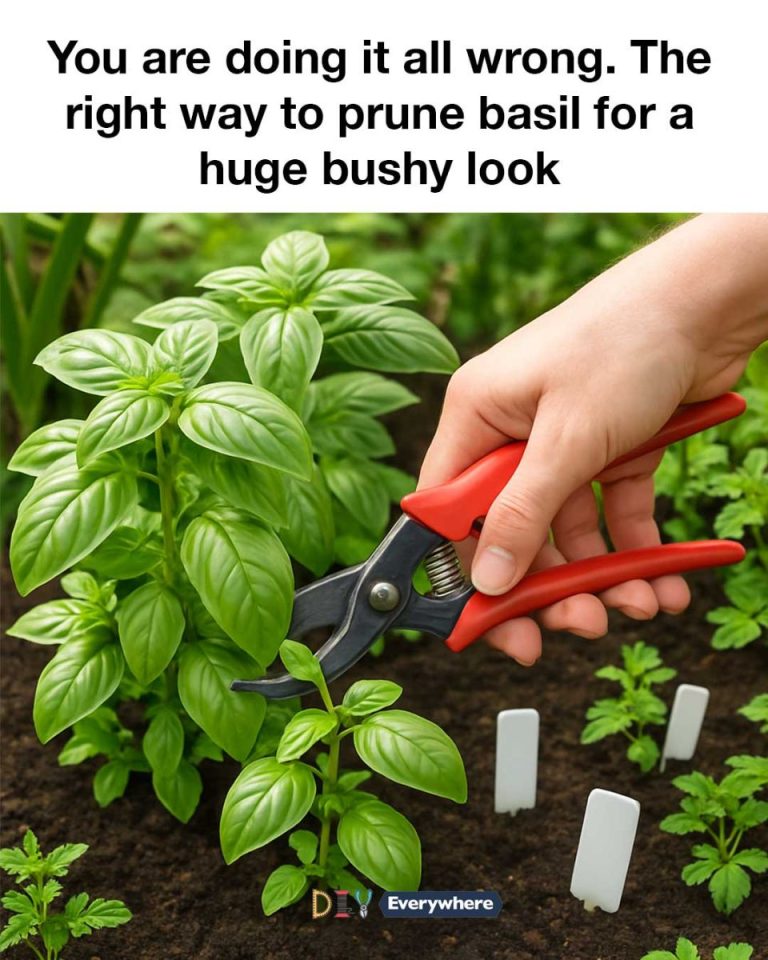ADVERTISEMENT
Basil is a beloved herb, cherished for its aromatic leaves and versatility in the kitchen. Whether you’re making pesto, garnishing a pizza, or adding a fresh touch to a salad, basil can elevate your culinary creations to new heights. However, many home gardeners struggle to achieve that lush, bushy basil plant that seems to thrive effortlessly in professional gardens.
Pruning is the secret to a thriving basil plant, but it’s often misunderstood or overlooked. Many gardeners are hesitant to cut back their plants, fearing they might harm them. In reality, proper pruning encourages healthy growth and can transform a spindly basil plant into a robust, leafy bush. In this article, we will explore the right way to prune basil for a huge, bushy look, ensuring your plant remains healthy and productive throughout the growing season.
1. Understanding Basil Growth Patterns
Basil is a fast-growing annual herb that thrives in warm, sunny conditions. It grows from a central stem and produces pairs of leaves opposite each other. As the plant matures, it will naturally try to flower and set seed, which can signal the end of its life cycle. To keep basil producing leaves, it’s crucial to understand its growth pattern and intervene at the right time.
Each time you prune basil, you encourage it to branch out. By cutting just above a pair of leaves, you stimulate the plant to produce two new stems from the leaf nodes. This branching effect is what leads to a bushier plant. Ideally, you should start pruning when the plant is about 6 inches tall, allowing it to develop a strong structure early on.
2. The Importance of Pruning for Basil Health
Pruning is not just about aesthetics; it’s essential for the health and longevity of your basil plant. Regular pruning prevents the plant from becoming leggy and encourages it to focus its energy on producing lush foliage rather than flowers and seeds. When basil flowers, it diverts energy away from leaf production, resulting in fewer leaves and a less flavorful plant.
Moreover, pruning helps improve air circulation within the plant, reducing the risk of fungal diseases that thrive in humid conditions. By removing excess foliage, you also allow more sunlight to reach the inner parts of the plant, promoting even growth and reducing the likelihood of pests.
3. Common Mistakes in Basil Pruning
